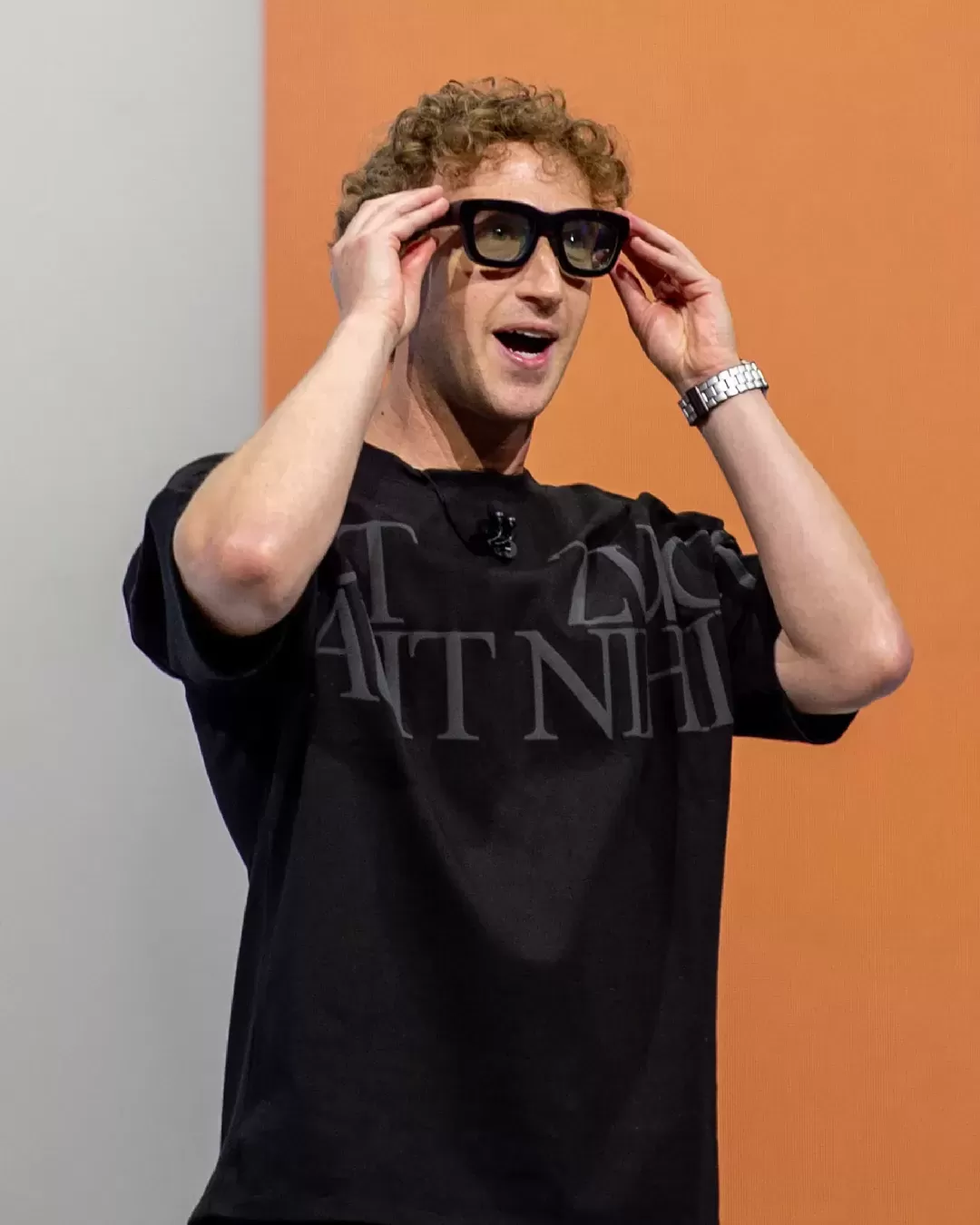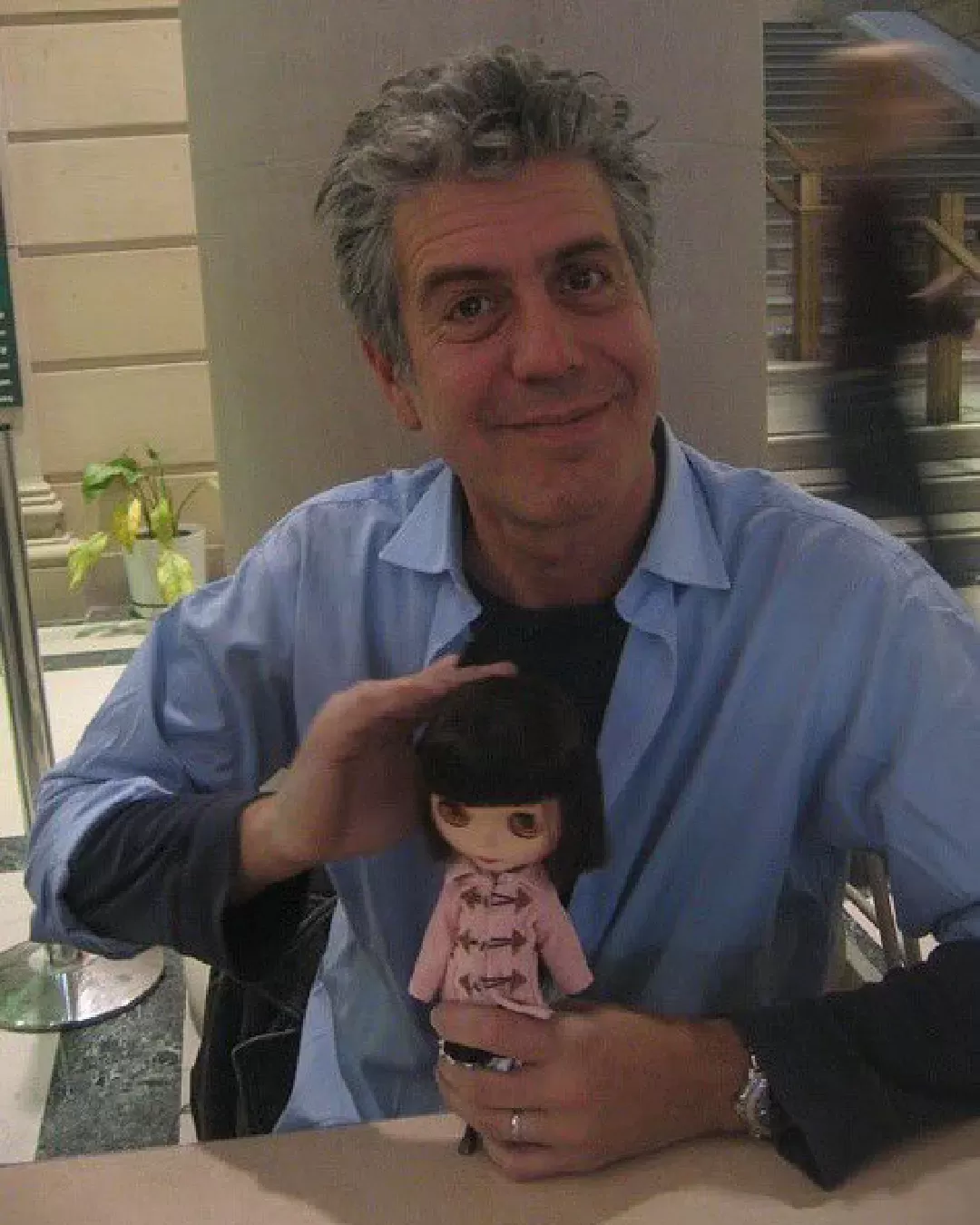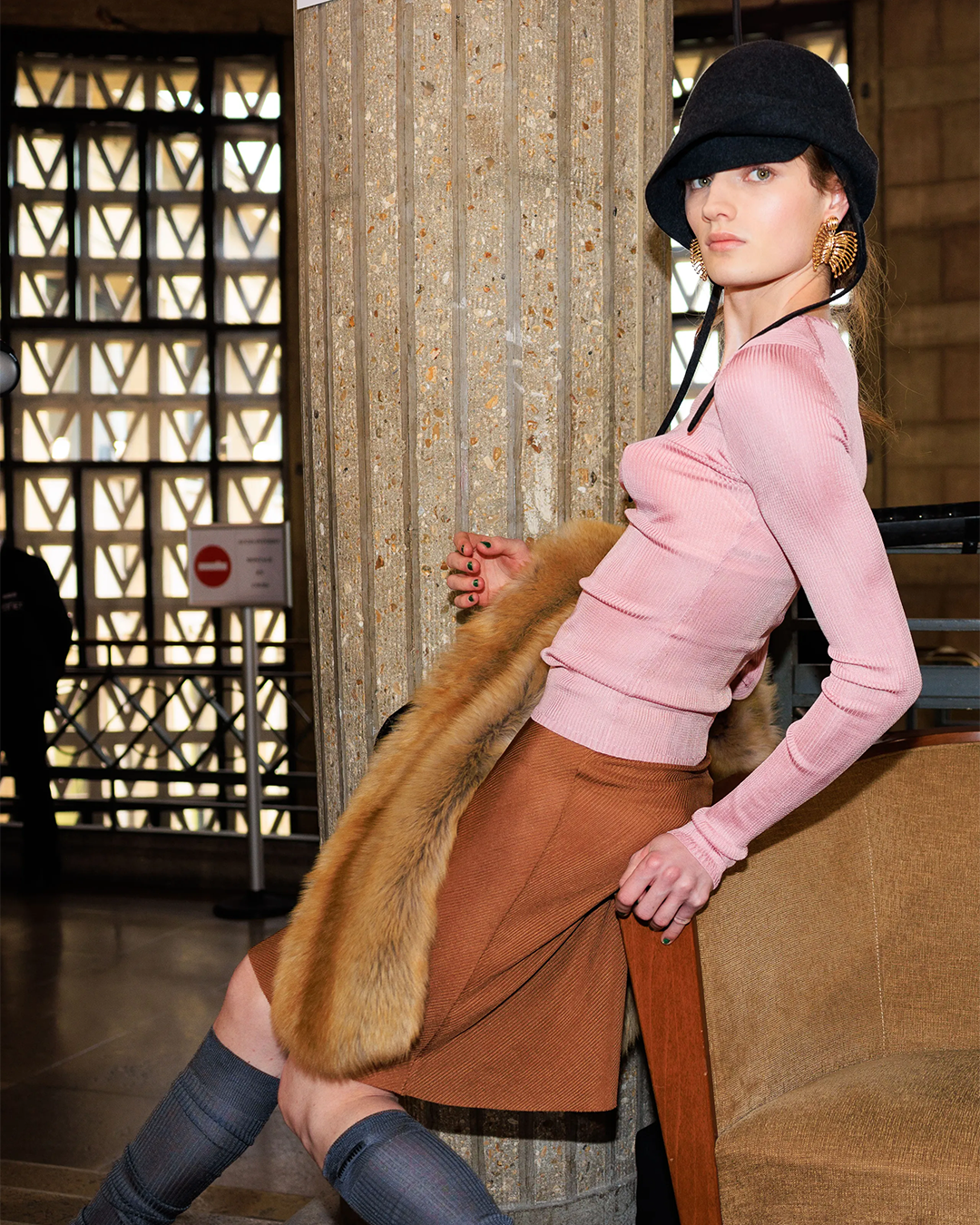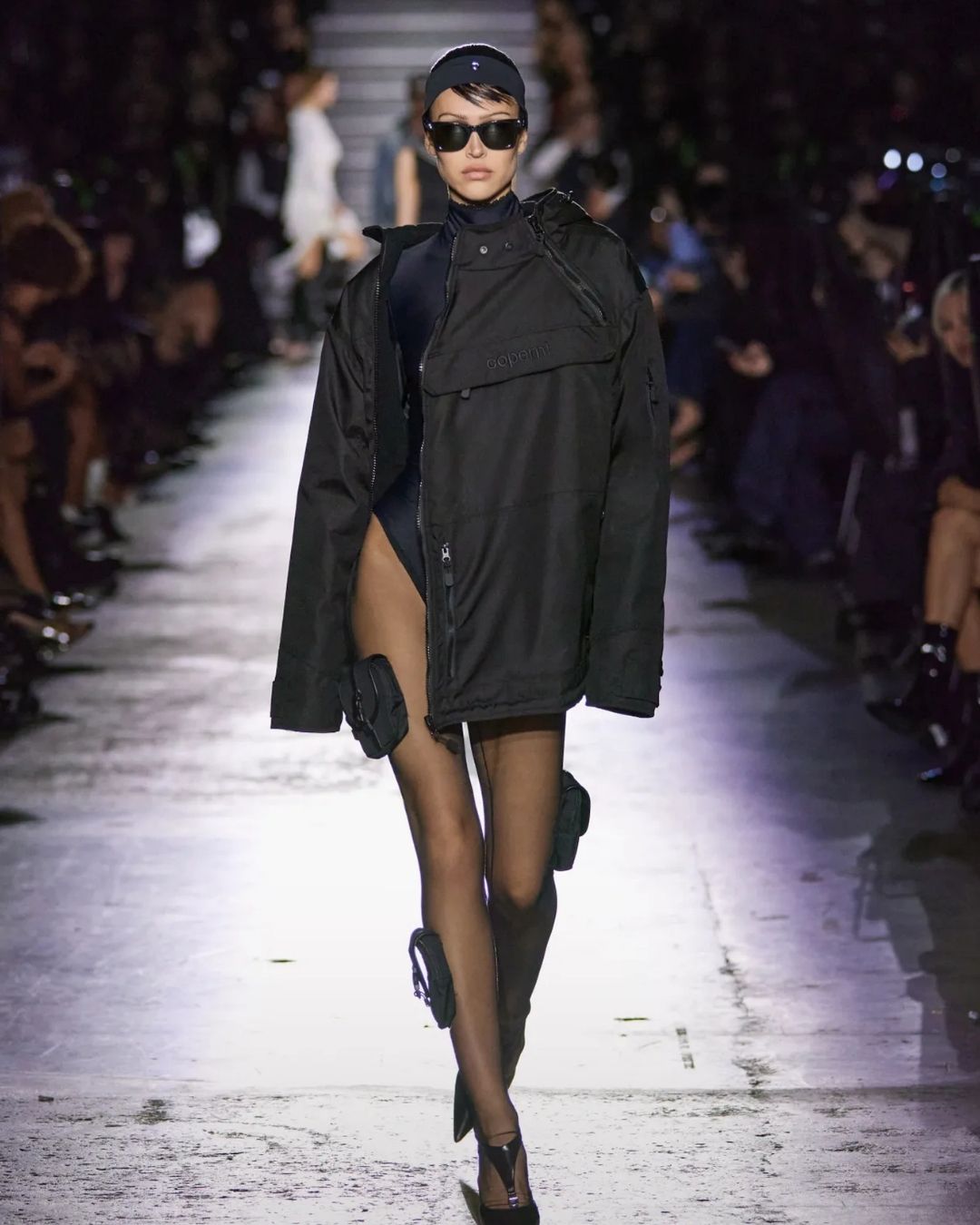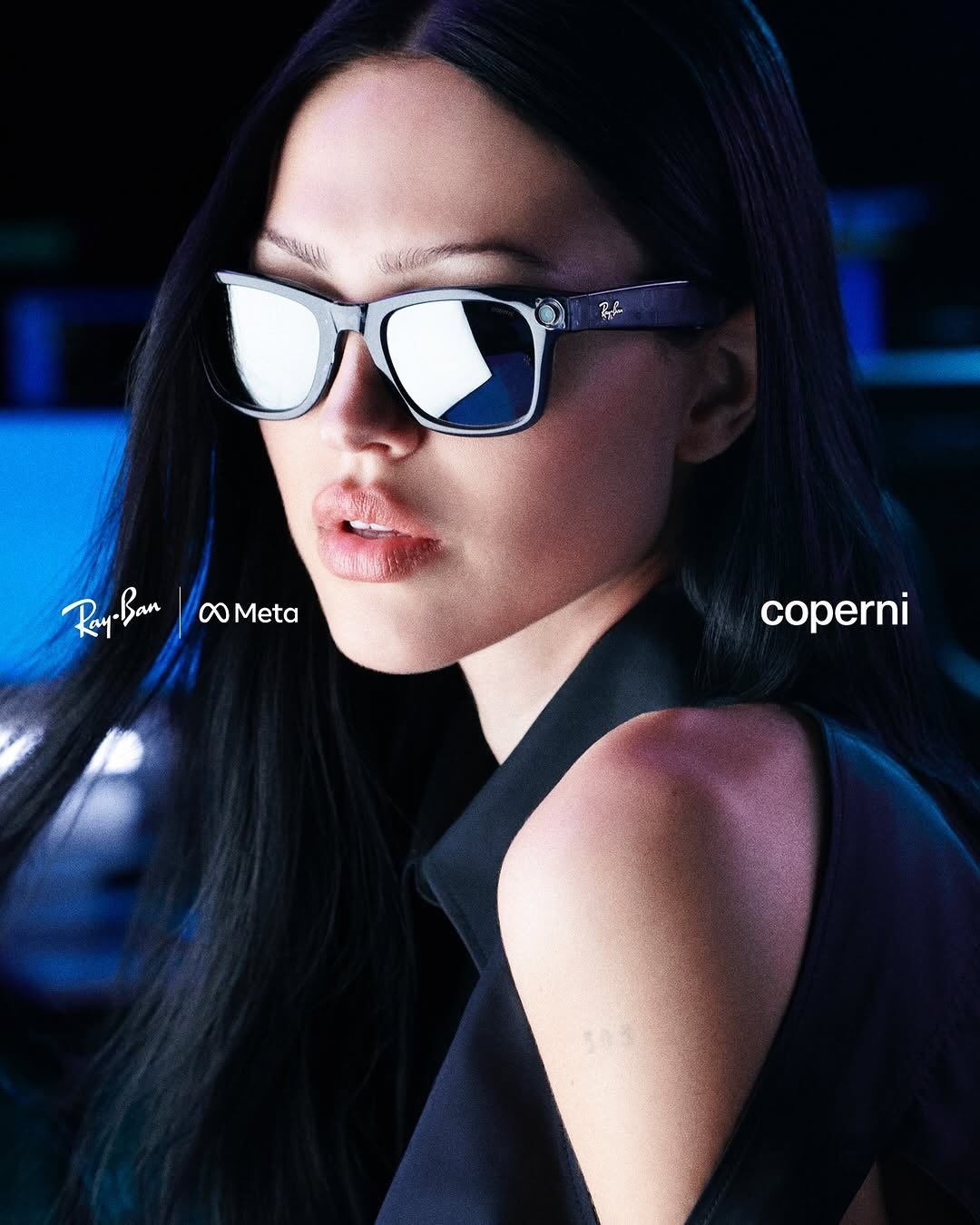
The history behind Coperni's spray dress Between the homage to Alexander McQueen and a successful marketing strategy
On Friday, Coperni's SS23 crowned Paris fashion week with the most iconic moment of the season when an ethereal, motionless Bella Hadid had a whitish paint sprayed on her, which, under the astonished gaze of the audience, transformed as if by magic into the fabric. Photos and videos multiplied at lightning speed on social media depicting the layers of silicone as they emerged from the barrel of spray guns and covered Hadid in a substance that gave shape to a dress. Next, an assistant cuts the garment close to the thigh for ease of movement and to demonstrate to the public that it is a real garment and not just make-up, even arranging the straps into an elegant Bardot-style neckline. But the excitement and clamour generated by a moment that will undoubtedly go down in the annals of fashion history soon faded, as soon as critics pointed out that the idea proposed by the duo behind Coperni (Sébastien Meyer and Arnaud Vaillant) had already been presented by Alexander McQueen for spring/summer 1999, that the technology used for the spray dress had been around for more than a decade, and that, leaving aside the Hadid-staged charade, the rest of the collection was not all that memorable.
The spray-on technique that made Coperni’s final SS23 look possible was invented by Spanish designer Manel Torres in 2010 pic.twitter.com/CPYya0whKQ
— (@headyslimane) October 1, 2022
On WWD Joelle Diderich explains that «the spray technique was developed by Fabrican, a company founded by Spanish designer and scientist Manel Torres. Fabrican liquid contains cotton or synthetic fibers suspended in a polymer solution that evaporates on contact with the body. After being worn, it can be removed and transformed back into a solution, ready to be reused. The co-founders of Coperni have been working with Torres and his team at the Bioscience Innovation Centre in London for the past six months to develop the spray garment.» Onlookers were quick to point out the similarities between Coperni's show and Alexander McQueen's legendary SS 1999 runway show, in which, inside a box-like set-up, model Shalom Harlow was assaulted by two robotic arms that sprayed her white flounced skirt dress with grey and green spray paint. A statement on McQueen's tormented creativity and how any act of creation contains within it the seed of violence.
But unlike McQueen and other similar operations, such as Hussein Chalayan's robotic dresses in 2007 and the clothes made of ice cubes in Martin Margiela's SS06, Coperni's effort seemed rather scientific, emphasizing a dimension, the technological one, that is deeply linked to the brand's identity. The name itself, Coperni, takes its inspiration from the scientist Niccolò Copernico, who by demonstrating that it is the Sun, and not the Earth, that is at the centre of the universe, revolutionized the conception of the world and man within it. For the founders, creative director Sébastien Meyer and CEO Arnaud Vaillant, that kind of paradigm-shifting thinking as we know it is at the heart of everything they do: «The idea behind Coperni is to mix this notion of chic, of our French DNA, and merge it with something more futuristic. We have always been passionate about innovation, exploring digital space and futurism» - Arnaud explained exclusively to Harper's Bazaar Arabia from his headquarters in Paris.
According to Vogue Business, the dress that materializes on the catwalk is actually part of a very specific marketing strategy, derogatorily termed 'Gimmick' by Rachel Tashjian on Harper Baazar, and which has led the brand, less than a decade after its founding in 2013, to endemic success among members of Gen Z and on TikTok, as well as doubling its profits over 2021. Alongside wearable collections and minimal garments, a few quirky, Instagrammable pieces are tasked with grabbing the audience's attention in an endless loop of interactions. For the AW22 show, Meyer designed a glass Swipe bag, which was soon to be worn by Doja Cat, Tinashe and worn by Jenner in a version with devil horns in collaboration with emerging brand Hevn during the promotion of the new TV series The Kardashians. For SS23, in addition to the sprayed dress that will not be put on the market, the designer has designed a gold version of the it bag priced at €100,000. After the fashion show, the bag will be melted down and resold to its Italian supplier, only to be remade to order. Coperni has caught the attention of young luxury consumers around the world, attracted by the sense of novelty and a relatively affordable price range (handbags around €600, ready-to-wear up to around €1,100), all without compromising the "saleability" and functionality of the garments.










































